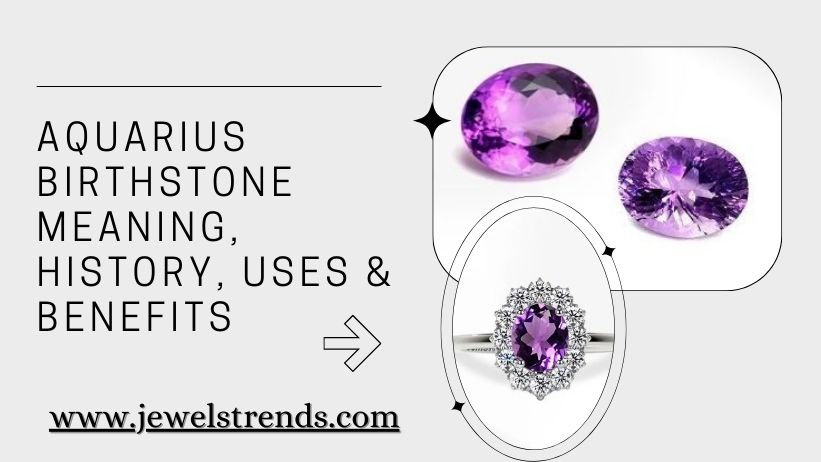
Gemstones have always been prized for their beauty and rarity, but not all gemstones are created equal. Some gemstones undergo various treatments and enhancements to enhance their color, clarity, or durability. For instance, Opalite crystals are not natural occurring stones and hence undergo many treatments.
It’s important for buyers to be aware of these processes so they can make informed purchasing decisions.
In this article, we’ll explore the different types of gemstone treatments and enhancements and what to look for when buying a gemstone. Whether you’re a seasoned gemstone collector or a first-time buyer, this guide will provide you with the knowledge you need to make an informed and confident purchase.
Definition of Gemstone Treatments and Enhancements
Gemstone treatments and enhancements are processes that alter the appearance, durability, or value of a gemstone. These treatments can range from simple processes like polishing and cutting to more complex procedures like heat treatment, dyeing, and filling.
The purpose of these treatments is to improve the gemstone’s aesthetic qualities, such as color, clarity, or brilliance, or to enhance its durability. It’s important for buyers to be aware of these treatments, as they can affect the value and quality of the gemstone.
Common Gemstone Treatments

Heat Treatment
Heat treatment is a common and widely accepted form of gemstone enhancement. This process involves exposing the gemstone to high temperatures in order to improve its color, clarity, or overall appearance. For example, heat treatment can be used to enhance the blue color of aquamarine or the green color of emerald. Stones like Amethyst also are given heat treatment.
Irradiation
Irradiation is a process in which gemstones are exposed to high-energy radiation in order to change their color. This treatment is commonly used to produce fancy colored diamonds and can also be used on other gemstones like topaz and tourmaline.
The resulting color can range from green to yellow to pink and is considered stable, but it is still important to check if the stone has been treated before making a purchase.
Dyeing
Dyeing is a process in which a gemstone is treated with a colorant to improve its color or to give it a completely new hue. This treatment is most commonly used on gemstones like jade, coral, and turquoise. It’s important to be aware of the potential for fading or discoloration, especially with prolonged exposure to light and heat.
Fracture Filling
Fracture filling is a process in which fractures or internal inclusions in a gemstone are filled with a material to improve its clarity and appearance. This treatment is often used on gems like emeralds, which often have many cracks and inclusions. The filling material is usually a type of resin or oil, but it is important to note that the filling may not be permanent and can be lost over time or with exposure to heat or chemicals.
Bleaching
Bleaching is a process in which a gemstone is treated with chemicals or high-intensity light in order to remove or lighten its color. This treatment is most commonly used on pearls, but it can also be used on other gemstones like coral and turquoise. Bleaching can improve the appearance of a gemstone, but it is important to be aware of the potential for damage or discoloration, especially with exposure to heat or chemicals.
It is important to note that some gemstone treatments and enhancements may affect the value or stability of a gemstone, so it is always important to be informed and aware of the treatments a gemstone has undergone before making a purchase.
Common Gemstone Enhancements

Clarity Enhancement
Clarity enhancement refers to any process that improves the gemstone’s appearance by reducing the visibility of inclusions or blemishes. This can include methods like fracture filling, laser drilling, and bleaching. While these treatments can improve the appearance of the gemstone, it is important to be aware that they may affect the stone’s stability and value.
Surface Enhancements
Surface enhancements refer to any process that improves the appearance of a gemstone’s surface, such as polishing, cutting, or re-cutting. These treatments can enhance the gemstone’s overall brilliance and beauty, but do not alter its internal structure or composition.
Carat Weight Enhancement
Carat weight enhancement refers to any process that increases the weight of a gemstone, such as using fillers or coatings. This can result in a larger and more valuable gemstone, but it is important to be aware that these treatments may affect the gemstone’s durability and stability.
It is important to note that while gemstone enhancements can improve a gemstone’s appearance and value, it is important to be informed and aware of the treatments a gemstone has undergone before making a purchase. Some enhancements may also be less stable and more prone to damage than natural gemstones, so it’s important to weigh the potential benefits against the risks.
Considerations Before Buying Treated or Enhanced Gemstones
Price: The price of treated or enhanced gemstones can often be lower than their natural counterparts, making them a more affordable option for those on a budget. However, it’s important to consider that these stones may not hold their value or be as valuable in the long term as a natural gemstone.
Longevity: Some gemstone treatments and enhancements may affect the stability and durability of the stone, making it more prone to damage or discoloration over time. It’s important to consider the longevity of a treated or enhanced gemstone before making a purchase.
Resale Value: Treated or enhanced gemstones may not have the same resale value as natural gemstones, as the value of a gemstone is often based on its rarity and natural beauty. It’s important to consider the potential resale value of a gemstone before making a purchase, especially if you plan to sell it in the future.
Transparency: It’s important to be aware of the treatments a gemstone has undergone and to make sure that the seller is transparent about any enhancements or treatments the stone has undergone. A lack of transparency can lead to confusion or disappointment, and can also affect the value and quality of the gemstone.
In conclusion, it’s important to consider the price, longevity, resale value, and transparency of a treated or enhanced gemstone before making a purchase. While these stones can be a more affordable option, they may not hold their value or be as durable in the long term as a natural gemstone.
It’s important to be informed and aware of the treatments a gemstone has undergone before making a purchase in order to make an informed and confident decision.
Key Takeaways
- Gemstone treatments and enhancements are common practices used to improve the appearance and value of gemstones.
- Some common treatments include heat treatment, dyeing, filling, and irradiation.
- Not all gemstones are treated or enhanced, and it is important to be aware of the treatments and enhancements used on the gemstone you are considering purchasing.
- Some treatments and enhancements can affect the durability and value of the gemstone, and it is important to understand these factors before making a purchase.
- Always purchase gemstones from a reputable dealer and ask for documentation or certification to ensure that the gemstone is authentic and has been treated or enhanced in a responsible manner.
Conclusion
Gemstone treatments and enhancements are important factors to consider when purchasing a gemstone. Understanding the treatments and enhancements used on a gemstone can help you make an informed decision and ensure that you are getting a gemstone that is both beautiful and of good quality. Always purchase gemstones from a reputable dealer and ask for documentation or certification to ensure that the gemstone is authentic and has been treated or enhanced in a responsible manner.












